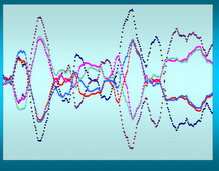Note I didn’t title this “the process of trading” which would be a completely different beast. Process trading is what most of us do except we haven’t named it as such. These are not rules – rules are things like “don’t trade when you are sick” or “let your profits run”. A process is different in that it ensures that every trade you take is taken in the same manner for the same reason with the same expectation of results. A process contains three parts – the sequence of steps which ensures everything remains orderly, the “rules” or the “what” of the process, and the “method” or the “how” of the process. Most people just write down a set of rules or “whats” without taking into consideration the how and the when. The method is probably far more important than the rules because it is the method that ensures consistent results.
Here is an exampleGap-Down Process for Longs
| When | What | How |
| 1 | At 10 A.M. Collect target stocks. | 1. Using (my collection method) collect a list of candidate gap-downs (my criteria for candidates) 2. Transcribe the list to (my charting software) watch list |
| 2 | Set-up watch list charts for initial observation | In (my charting software) set
|
| 3 | Every n minutes thereafter until | A dummy spot was formed in the last n-minute increment - The last n-minute increment low is higher than previous 2 or more declining lows - The last n-minute increment formed a white hammer-like formation that follows 2 or more declining lows |
| 4 | Given any one of the several targeting criteria in sequence step 3 - Wait one n-minute increment for confirmation | Did a white candle form following the targeting criteria? |
| 5 | If yes - purchase stock | Open a session with (my brokerage account) and follow (my trading process) |
The trading process includes algorithms for numbers of shares to be bought, where stops are to be set, and a method for exiting the trade if not stopped out.
Now if you identify all of your trading set-ups long and short in this manner you will be a far more successful trader in the end.

No comments:
Post a Comment